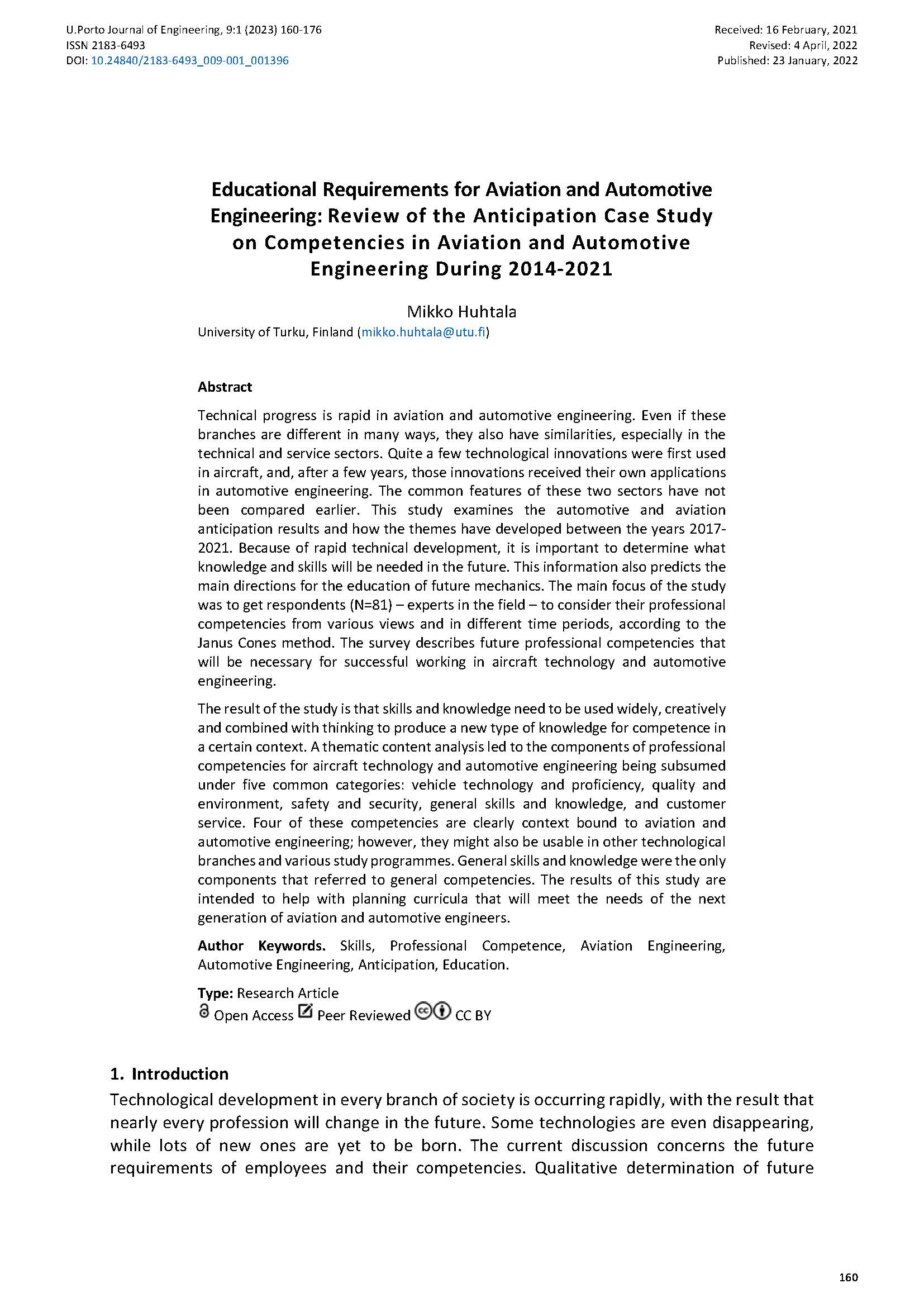Educational Requirements for Aviation and Automotive Engineering Review of the Anticipation Case Study on Competencies in Aviation and Automotive Engineering During 2014-2021
Main Article Content
Abstract
Technical progress is rapid in aviation and automotive engineering. Even if these branches are different in many ways, they also have similarities, especially in the technical and service sectors. Quite a few technological innovations were first used in aircraft, and, after a few years, those innovations received their own applications in automotive engineering. Because of rapid technical development, it is important to determine what knowledge and skills will be needed in the future. This information also predicts the main directions for the education of future mechanics. The main focus of our study was to get respondents (N=81) – experts in the field – to consider their professional competencies from various views and in different time periods, according to the Janus Cones method. Our survey describes future professional competencies that will be necessary for successful working in aircraft technology and automotive engineering.
The result of the study is that skills and knowledge need to be used widely, creatively and combined with thinking to produce a new type of knowledge for competence in a certain context. A thematic content analysis led to the components of professional competencies for aircraft technology and automotive engineering being subsumed under five common categories: vehicle technology and proficiency, quality and environment, safety and security, general skills and knowledge, and customer service. Four of these competencies are clearly context bound to aviation and automotive engineering; however, they might also be usable in other technological branches and various study programmes. General skills and knowledge were the only components that referred to general competencies. The results of this study are intended to help with planning curricula that will meet the needs of the next generation of aviation and automotive engineers.
Downloads
Article Details

This work is licensed under a Creative Commons Attribution 4.0 International License.
Authors who publish with this journal agree to the following terms:
- Authors retain copyright and grant the journal right of first publication with the work simultaneously licensed under a Creative Commons Attribution License that allows others to share the work with an acknowledgement of the work's authorship and initial publication in this journal.
- Authors grant the journal the rights to provide the article in all forms and media so the article can be used on the latest technology even after publication and ensure its long-term preservation.
- Authors are able to enter into separate, additional contractual arrangements for the non-exclusive distribution of the journal's published version of the work (e.g., post it to an institutional repository or publish it in a book), with an acknowledgement of its initial publication in this journal.
- Authors are permitted and encouraged to post their work online (e.g., in institutional repositories or on their website) prior to and during the submission process, as it can lead to productive exchanges, as well as earlier and greater citation of published work (See The Effect of Open Access).

